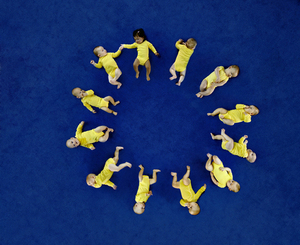Service navigation

.
Main Navigation
Area-Navigation
Further information


- ... that the newest EU members, Bulgaria and Romania, have the youngest mothers, as the mean age of women when their children are born is 26.03 and 26.70 years, respectively? In Liechtenstein and Spain the average age of a mother at the birth of the first child is at around 31 years the highest in the EU. Slovenia, with 29.36 years, is near the EU average.
- ... that between 1960 and 2005 the world's population more than doubled, rising from 3,024 million inhabitants to 6,465 million, whereas during the same period, the population of the EU countries rose by only 23%?
- ... that Malta has, with 1271 people per square kilometre, by far the highest population density of any EU member state, followed by Holland, with 482 and, Belgium with 344 inhabitants per km2? On the other hand, Finland has the lowest population density, with 17 inhabitants per km2. The EU-27 average is 113, whereas global is average 48. Slovenia has a population density of 99 inhabitants per square kilometre.
- ... that life expectancy in the EU rose in the last four decades by more than 8 years? Today, life expectancy at birth is 75 years for male and 82 for female EU citizens. Of all member states, Sweden has the highest life expectancy for males (78 years) and Spain for females (83 years). In comparison, global life expectancy at birth is 65 for males and 69 for females, whereas in Slovenia it currently stands at 73 for men and 80 for women.
- ... that current forecasts predict that the proportion of the population aged 65 and over will have risen by around 30% by 2050, whereas it stood at 17% in 2005? These trends are also reflected in the old-age dependency ratio, which is expected to rise above 50% for the EU by 2045, meaning that for every pensioner there will be fewer than two people working.
- ... that, contrary to what is happening in other parts of the world, the land area covered by forests in the EU is gradually increasing (up by 4.8% overall between 1990 and 2005). In Ireland, the area of woodland increased by 47.6% in the same period. As regards the share of forest area, the EU average is at 43.2%, with Finland (76.5%), Sweden (74.8%) and Slovenia (64.9%) having the highest shares of all member states.
 1 2 3 4 5 6 7 8
1 2 3 4 5 6 7 8 
References
Date: 28.12.2007

